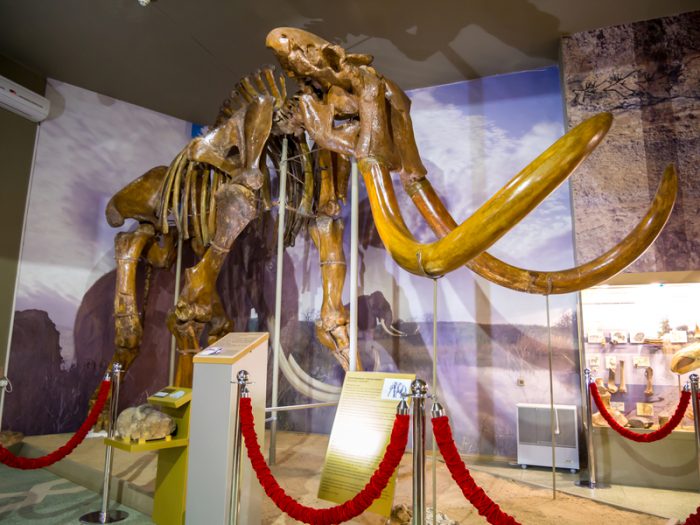Mammoths were more than just big in reality. These ancient, extinct relatives of the modern elephant are also big in the imagination.
Next to the dinosaurs, woolly mammoths are perhaps the most well-known prehistoric creatures. After all, we already love elephants. What's not to love about one with even bigger, curved tusks and a thick fur coat like a brown bear? We rest our case...
But woolly mammoths were not the only mammoths out there—and they certainly weren't the most ancient. From the Columbian mammoth of North and Central America to the steppe mammoth of Siberia, there were other mammoths that lived alongside and even earlier than the woollies.
And now, scientists have pulled off an amazing feat. They've sequenced, or pieced together, the DNA of three such ancient mammoths. Taken from three well-preserved mammoth teeth found in Siberia and dating back between 700,000 to 1.6 million years, these are the oldest samples of DNA—or genetic material—ever sequenced.
And one—the oldest—revealed a stunning surprise.
A new lineage
Woolly mammoths were once a dominant species in the frozen plains of Earth's recent ice ages. (Getty Embed)
Before this discovery, here's how scientists thought the mammoth family tree worked.
First came the steppe mammoth, starting around a little under 2 million years ago, which lived in what is now Siberia. Around 800,000 years ago, the woolly mammoth evolved as a distinct species in northern Asia and later North America. Then around 400,000 years ago, the Columbian mammoth evolved, a hybrid of steppes and woollies that had migrated to North America. Do you follow?
When the scientists tested the mammoth teeth, what they found sort of matched up with this theory ... but not completely.
Tooth test!
The youngest tooth, from about 700,000 years ago, was of a juvenile woolly mammoth. Sounds good to us!
The next oldest, from about 1 million years ago, contained the DNA of an adult steppe mammoth. (Researchers called this the Adycha sample.) 2 for 2!
But the oldest tooth, called the Krestovka sample? At 1.6 million years old, its DNA was also of a mammoth ... except it was not the same genetic lineage as the other mammoth tooth. Unexpectedly, scientists had found a whole other mammoth species!
Who made who?
Fascinating woolly mammoth mummies, like Lyuba, are expanding our knowledge of these amazing animals. (Getty Embed)
Now that the test has been done, the question before scientists is this. Which mammoth species made the journey across to North America to mate with woolly mammoths and start the Columbian mammoth species?
The Adycha? Or the Krestovka?
And which of these two species evolved to become the original woolly mammoth in Siberia?
So many questions! Whatever the answer ends up being, it's safe to say that this moment of research has turned the history of mammoths on their very large ears.
And speaking of questions, you may have one yourself. Does the sequencing of ancient DNA mean that one day we'll be able to bring a mammoth back to life? Well, fortunately for you, we've already answered that in one of our General KnOWLedge videos! Will you like the answer?
Press play to find out!
 The steppe mammoth may be long since dead, but the questions surrounding it are very much alive! (Photo
The steppe mammoth may be long since dead, but the questions surrounding it are very much alive! (Photo 








